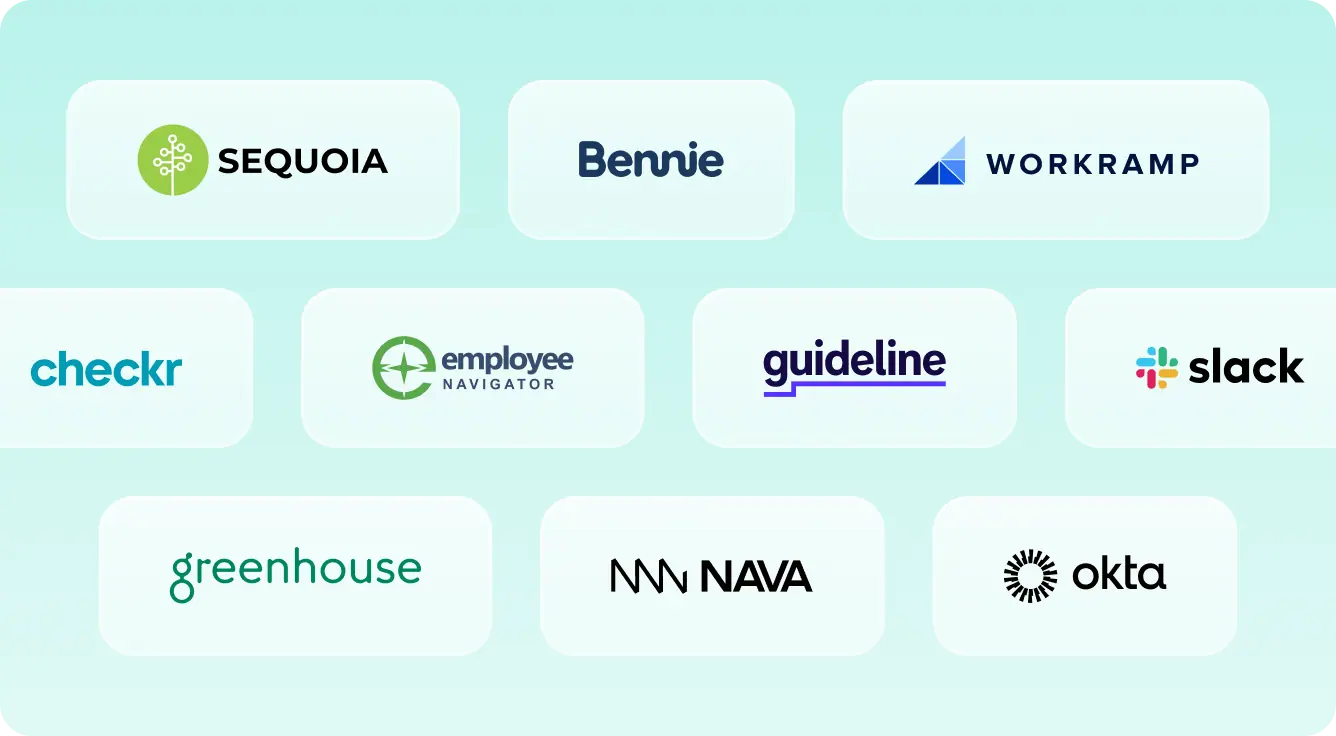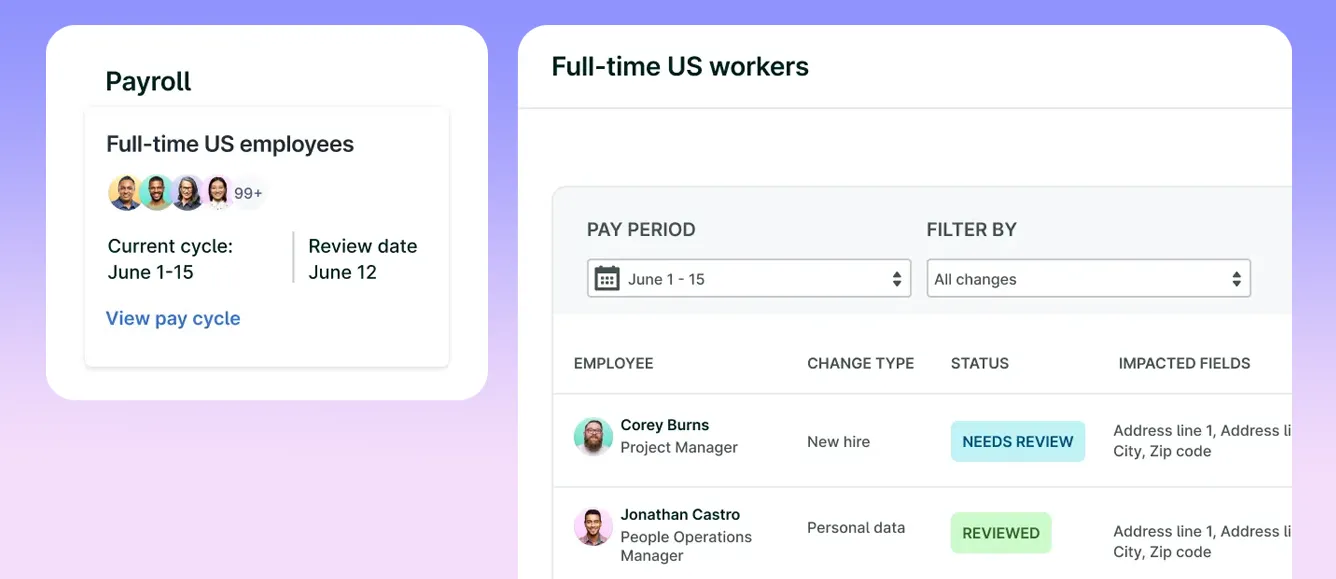The choice between passive benefits enrollment and active enrollment isn't just administrative — it’s strategic. It can impact everything from employee engagement to how employees utilize their benefits and your own team’s administrative burden.
The right approach for your organization depends on several key factors like HR’s bandwidth, company demographics, and more. Below, we look more closely at both enrollment options.
{{rich-takeaway}}
Understanding the Two Enrollment Models
Passive enrollment means employees get automatically re-enrolled in their current benefits unless they actively make changes. It’s the “set-it-and-forget-it” approach where the previous year’s elections roll over into the new plan year.
Active enrollment requires every employee to make a conscious selection during open enrollment — even if they want to keep the same benefits they had last year. No action means no coverage.
How Each Approach Works in Practice
For human resources teams and others planning open enrollment, here’s an overview of each approach.
✅ Passive Enrollment Process
Since no action is needed, passive enrollment leads to a more streamlined process for both employees and people teams. Employees review benefits communications and only take action if they want to make changes. HR’s administrative workload is focused on processing these changes, rather than inputting every employee’s election.
In terms of communication strategy, HR emphasizes what’s changing, if anything, in terms of new benefit offerings in the new plan year and reminds employees of deadlines to make updates.
📢 Active Enrollment Process
With active benefits enrollment, “You’re encouraging employees to become more engaged in their benefits,” said Cristal Feliciano, founder of CLAHRITY, an HR consulting firm. Employees must log into the benefits system and confirm or update their selections. HR has a heavier lift here, as you must track enrollment and follow up to ensure a 100% participation rate before deadlines.
Communication is essential with active enrollment, and HR should launch campaigns with significant lead time to remind and educate employees. A multi-channel approach is best, where HR leverages email, Slack, company intranet, and in-person posters, if applicable.
Bria P. McCray, founder of HRBP Consulting, recommends using the screengrab software Loom, which makes it easy to “record an explanation of changes in benefits or share a step-by-step guide for benefits selection and enrollment.”
Not all benefits are eligible for passive enrollment.
Even organizations that choose passive enrollment can’t make everything automatic. “You still need to do active open enrollment for money accounts,” Feliciano explained, referring to flexible spending accounts (FSAs) and health savings accounts (HSAs).
Every organization needs some level of active enrollment, regardless of its overall approach.
McCray echoed this. “From a compliance perspective, we can’t automatically select FSA elections. So if someone chooses to elect flexible spending, and they want to do that again next year, they have to re-elect for that — it’s one that cannot be passively enrolled.”
This means every organization needs some level of active enrollment, regardless of its overall approach.
{{rich-highlight-2}}
How to Choose Passive or Active Enrollment
When it comes to selecting passive or active open enrollment, “It’s just a matter of philosophy in terms of how much employee engagement you want, and also what you’re able to handle administratively,” said Feliciano.
Choose passive enrollment when:
- Your workforce values simplicity over control.
- Your benefits package is unchanging or remains relatively stable.
- You have limited capacity for intensive communication campaigns.
- Your employees have a high level of trust in the organization.
Choose active enrollment when:
- You’re making significant changes to your employee benefits program.
- Your workforce includes employees with complex healthcare needs who want control over their decisions.
- You have strong communication systems and adequate staffing for extensive outreach.
- You’re concerned about employees making uninformed benefits choices.
Active vs. Passive Open Enrollment, at a Glance
Consider demographics, too.
When deciding on one approach over the other, “Age is definitely one demographic to keep in mind,” McCray noted. “Generally, our older population of employees will have a lot more questions about our benefits.” With a sizable older population, consider selecting active enrollment so employees have the opportunity to review benefit offerings each year.
But demographics go beyond age. Feliciano managed benefits for a manufacturing workforce where “technology access was very limited. So in addition to all of the electronic communications, which included emails, team messages, and updating our SharePoint site, we still did posters. We still did mailings to homes,” she said.
Active enrollment can become a logistical headache that leads to coverage gaps if HR doesn’t have the right tools at hand.
The employee communications challenges multiply when you’re dealing with deskless workers, multiple locations, or employees who don’t have regular email access. For these populations, active enrollment can become a logistical headache that leads to coverage gaps if HR doesn’t have the right tools at hand.
Meanwhile, working predominantly with startups, McCray found that her teams of engineers often preferred minimal involvement: “I found that passive seems to work best for them. These are folks that genuinely want benefits, but they often don't spend a lot of time educating themselves on the benefit options or going through the enrollment process.”
Regardless of which option you choose, engage your brokers.
During open enrollment, HR is trying to balance intensive administrative duties with fielding questions about benefits, but the most successful people teams don’t try to become benefits experts overnight. Rather, they leverage their brokers as true partners in the process.
I think a lot of times we sign agreements with vendors and then we treat the vendor like it’s just software...But it’s part of their job to support you
Benefits brokers should be doing the heavy lifting when it comes to employee education and question-answering. This partnership becomes especially valuable when employees are navigating specific scenarios, like understanding health coverage for anticipated medical procedures or evaluating health plan options for changing family situations.
“I think a lot of times we sign agreements with vendors and then we treat the vendor like it’s just software, and we don’t take advantage of the people who work there. But it’s part of their job to support you,” said Kim Rohrer, founder of Patchwork Portfolio.
The key is having your broker conduct info sessions and serve as the direct point of contact for detailed coverage questions. “All of those types of questions you can pass along to your broker during the open enrollment period or in advance of it,” said Rohrer.
{{rich-highlight-1}}
Pitfalls to Avoid
Whether you choose active or passive enrollment, avoid the following operational mistakes that can complicate even the best-planned open enrollment.
✅ Letting open enrollment become a check-the-box activity: When employees rush through selections without understanding their choices, they can end up with insufficient coverage. Build in decision-support tools and encourage thoughtful review, even in passive enrollment.
🆘 Using confusing or generic benefits language: Benefits communications that are filled with insurance jargon will alienate employees. Feliciano’s team learned to “repeat the same information in different ways” and focus on plain language that resonated with their specific workforce, she said.
📝 Forgetting to update systems after elections are finalized: The enrollment process doesn’t end when employees submit their selections. Payroll deductions, health insurance carrier rosters, and HR information systems (HRISs) all need to reflect the new elections accurately.
⏳ Failing to follow up with late or incomplete submissions: Whether you’re using passive or active enrollment, some employees will miss deadlines or submit incomplete information. Having a clear follow-up process prevents coverage gaps and compliance issues.
How Lattice Supports Your Enrollment Strategy
Regardless of whether you choose passive or active enrollment, Lattice can streamline your benefits administration through powerful integrations with benefits tools like Employee Navigator.
The Lattice and Employee Navigator integration brings ease to your benefits selection with:
- Automatic data syncing: Seamlessly transfer employee data from Lattice to your benefits administration tools during onboarding, eliminating duplicate entry and reducing errors.
- Real-time payroll updates: When employees make benefit elections, their payroll deductions update automatically in Lattice Payroll.
- Accurate information management: Real-time syncing ensures demographic and benefit data remain accurate across all systems.
These integrations allow your team to focus on what matters most — supporting your people through the enrollment process — rather than managing manual data entry and updates.
Streamlining the Process for Everyone
The choice between passive and active enrollment isn’t about finding the “right” answer but about finding the right fit for your organization. Consider your workforce demographics, benefits complexity, available resources, and long-term engagement goals.
Whether you choose passive or active enrollment, success lies in thoughtful implementation, regular communication, and the right technology to support your strategy. Either way, the goal remains the same: ensuring your employees have the benefits coverage they need while streamlining the process for everyone involved.
Ready to streamline your benefits administration? Schedule a demo to see how Lattice can support your open enrollment strategy.
Key Points
- Passive enrollment rolls previous elections over automatically, while active enrollment requires annual reselection.
- Your choice of enrollment model should be based on workforce demographics, benefits complexity, current administrative capacity, and desired level of employee engagement.
- All organizations need some level of active enrollment, as FSAs and HSAs require annual elections.
- Modern HRIS integrations can support either approach while eliminating manual administrative burden.









